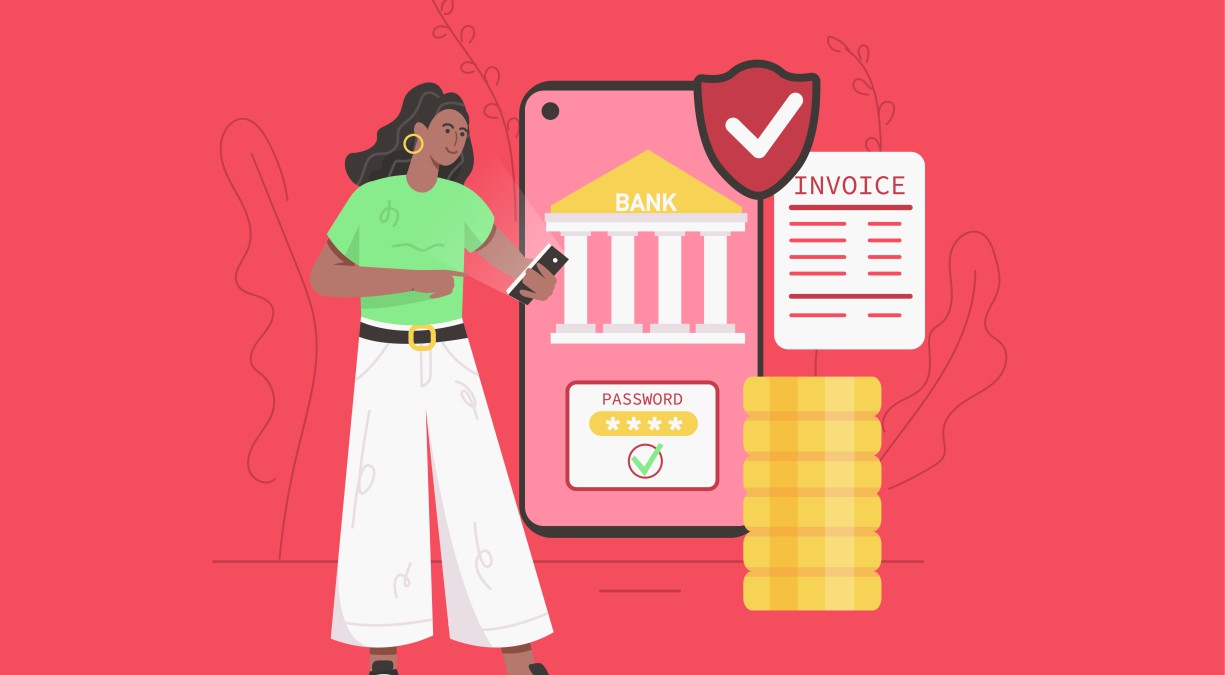What is a Credit Card Chargeback?
A credit card chargeback happens when a customer’s bank takes money straight out of a merchant account and returns it to the customer. The bank doesn’t need to ask first – they just take the money. This hits businesses hard because the sale is lost, fees between $15-$100 have to be paid, and if it happens too much, banks might shut down the merchant account completely.
It all starts when a customer calls their bank to complain about a charge instead of calling the business first. As soon as the bank accepts their complaint, they pull the money from the account. This usually happens in just a day or two before anyone even knows there’s a problem.
The bank then sends a notification that gives about 7-10 days to figure out next steps. At that point, it’s either accept the loss or try to fight it by sending proof like receipts, shipping records, and emails with the customer. Fighting it and losing means it can drag on for months and cost even more in fees.
The business loses money from the sale, pays extra fees, and gets watched more closely by their bank. If more than 1% of sales turn into chargebacks, banks will drop the merchant.
To avoid chargebacks you want to make sure the business name shows up on credit card statements in a way people recognize. It also helps to use fraud detection software, answer customer calls right away, and keep complete records of every sale.
How It Works
The chargeback process works differently than a refund because it starts without any merchant input. Customers won’t call or email about their problem. Instead, they’ll go straight to their bank and file a dispute against the business.

Once the bank takes their claim, they’ll reverse the transaction immediately. The money gets pulled out of the merchant account automatically – usually within a few business days. There’s no warning either. The business just gets a chargeback notification that explains why it’s happening.
These chargebacks definitely put merchants on the defensive. There’s a short window to respond – usually just 7-10 days depending on the payment processor. During this time, merchants can collect evidence to fight the chargeback if it seems wrong. The clock starts running the second that notification arrives. Missing this deadline means automatically losing the dispute.
The bank gives customers their money back temporarily while investigating everything. So they get their funds returned immediately even though nobody has decided who’s right yet. Merchants are pretty much treated as guilty until proven otherwise.
Fighting it means sending evidence through the payment processor. This might include receipts, proof of delivery, or emails between the merchant and customer. The whole process can take a few weeks or even months to finish.
Sometimes these disputes go to arbitration through the card networks. These cases come with extra fees that can cost hundreds of dollars. The card network makes the final call and there’s no appeal after that.
How it Affects Chargeback Prevention
Chargeback fees usually run anywhere from $15 to $100 per dispute – and trust me, these fees start to add up fast. Payment processors will also start watching chargeback ratios more closely.
Once the chargeback rate goes above what the industry considers acceptable, processors usually respond by raising transaction fees or putting merchants in expensive tracking programs. These programs can cost thousands of dollars every month and create extra paperwork for businesses. If the situation keeps going downhill, they might close the account completely.

When they close an account, the ability to process any payments online disappears. The business pretty much has to stop while scrambling to find a new processor who’s willing to take on a merchant with a bad chargeback history.
The solution is stopping chargebacks before they happen. Easy-to-read billing descriptors that customers will see and remember on their statements make a big difference. A lot of chargebacks happen just because cardholders don’t remember what they bought or who they bought it from.
Keeping thorough records is important when disputes come up. Complete records of customer emails, delivery confirmations, and transaction information need to be saved. This documentation helps win disputes that never should have been filed in the first place.
Strong customer service stops frustrated customers from calling their bank immediately. When people can reach support without hassle and get their problems solved quickly, they’re much less likely to file chargebacks. Make sure the team knows how to handle refund requests quickly and professionally.
Fraud detection tools help catch suspicious transactions before they go through. These systems look at buying patterns and flag any activity that seems fraudulent.
Example Scenarios
Here’s another common issue that catches store owners off guard. You ship out a product that arrives damaged. But then the customer never even bothers to reach out to the store about it. They go straight to their bank to request a chargeback instead of asking for a replacement or refund. This happens all the time with online stores. So now the seller is stuck dealing with a dispute that could have been handled with a customer service conversation.

Then there’s the fraud situation which is even worse. Someone uses stolen credit card information to buy from your store. Either fraud detection isn’t set up or the system misses the warning signs. When the real cardholder sees the charge later on, they dispute it and you’re the one who takes the loss.
These fraud chargebacks hurt twice. The products and the payment are lost, and then extra processor fees have to be paid on top of that. Every dispute makes the chargeback ratio increase, which might trigger higher processing rates on all future sales.
Most of these situations can be avoided with a bit of preparation. When billing descriptions are specific, it helps customers identify the charges on their statements. If packaging is solid and returns are hassle-free, people are much more likely to contact the store first. When strong fraud filters are in place, they catch suspicious transactions before they become a problem. The frustrating part is that these chargebacks usually come from simple mistakes that don’t seem like a big deal until they start costing money.
Requirements and Timeframes
When receiving a chargeback notification, you’ll have somewhere between seven to ten days to respond. Missing this deadline means you’ll automatically lose the case. There’s no way to get an extension or second chance with chargebacks.
The clock starts running as soon as you get that notification. The payment processor will send you all the information. But it’s important to move fast. Most merchants who wait until the last minute to look for evidence usually end up losing their case.
The response window will close whether you’re ready or not.

Different types of paperwork are needed for different chargeback reason codes. For fraud claims, you’ll need transaction records and proof the cardholder authorized the payment. For service disputes, emails and messages with customers matter a lot. For shipping disputes, you’ll need delivery confirmation and tracking info.
Customers have their own deadlines too. Most card networks give cardholders 120 days from the transaction date to file a dispute. Some situations let them have even more time, which means old sales can turn into problems months later.
Card networks also monitor how many chargebacks a business gets. Hitting around one percent of total sales will probably trigger a merchant account review. Go any higher and they might shut down the account completely.
The merchants who do well with chargebacks keep solid records, save all their customer emails, and track their shipments.
Frequently Asked Questions
What's the difference between a chargeback and a refund?
When customers want their money back, merchants have two main options. They can either issue a refund themselves, or they can wait for the bank to step in and force a chargeback on them. Most merchants don't know that. But this can affect everything that happens next. The difference between these two options matters quite a bit more than people might think.
With refunds, merchants stay in control of the entire process. They get to choose when to process the return and can usually work things out with their customer directly. But with chargebacks, the bank takes over completely, and suddenly the merchant doesn't have any say in what happens next. The bank makes all the decisions and the business just has to go along with whatever they choose.
Just looking at the timeline shows why this matters. Refunds usually take three to seven days to show up in a customer's account. But chargebacks can drag on for weeks or even months while banks investigate everything and make their choice. This long wait makes everyone unhappy - customers get frustrated and merchants don't know what will happen.
The financial impact is another big concern. Every chargeback comes with fees that can be anywhere from twenty to one hundred dollars. With refunds, there aren't any extra fees - the business just returns the original amount. Chargebacks count against your merchant account, and if you get too many of them, you could lose your ability to process payments at all.
How you manage returns can also affect your relationship with customers. When you take care of a refund request quickly and professionally, you show customers that their experience matters to you.
How much do chargebacks really cost merchants?
With chargebacks, yes, the original sale amount is lost. But that's just the beginning of the problems. The bank will charge a fee between $20 and $100 every single time this happens.
The product that was already shipped to the customer is also lost. Plus there are shipping costs and the time staff spends trying to fight the dispute. Merchants don't know that their payment processor will raise their rates if chargebacks start to increase.
The business has to pay for everything while the customer keeps the money and the product - this can directly affect profits and the problem gets worse with each dispute that comes in.
Here's where it gets bad. Let's say someone disputes a $100 purchase. That $100 is gone, then there's a $25 chargeback fee, $30 worth of lost product and $15 in shipping. Then an employee spends three hours at $20 per hour dealing with all the paperwork. When everything is added up, that $100 chargeback just turned into a $250 loss.
Some processors will actually shut down accounts if too many chargebacks come through. That means you have to find a new payment processor and those usually come with much higher rates than what was there before.
How long do I have to respond to a chargeback?
When a chargeback comes in, you should always act right away. Most card networks will give merchants 7 to 10 calendar days to respond. That's not much time at all and these deadlines won't change for anyone. There's no way to get extra time and no second chance to submit a response.
If you miss that deadline, you lose automatically - it won't matter if the merchant has perfect proof or if the customer is trying to scam them. The system will just move ahead without them. That money is gone forever.
Then the chargeback ratio goes up and can put the whole merchant account in danger.
Merchants should call their payment processor right away to find out how much time they have since each card network has its own set of laws. The processor will tell you the exact dates needed. They work with these deadlines every day. Make sure to set up alerts so these notices don't slip through the cracks.
Here's where this gets tough though. There needs to be enough time to pull together all the proof, write up a response and double-check that everything looks right. If merchants aren't prepared ahead of time, finding all that proof can take up most of the response time. All the paperwork together takes longer than people might think. The merchants who do well with chargebacks already have all their records set up and ready to go before they ever get the dispute.
What evidence do I need to fight a chargeback?
What you need most for any chargeback fight is proof. Most business owners don't pay enough attention to this. Order confirmations matter - they show what the customer bought and when they bought it. Delivery proof with signatures is also necessary to show the item actually got there.
Customer messages matter just as much. Every email and chat message should be saved because they'll show what happened. Terms of service agreements can help too - they show what terms everyone agreed to follow before buying anything.
Customer messages can make or break a case. Their own words become the strongest proof when disputes come up. Written messages contradict the exact claims customers make against businesses.
Here's what matters though - the proof has to match the problem. If the proof doesn't match up, the case will be lost every time. If someone says they never got their package, delivery confirmation is needed. If they say the product wasn't what was promised, their messages or photos that prove them wrong are necessary.
Don't just throw everything into the response. Pick the strongest pieces that answer their complaint directly. Three perfect documents that make sense together will beat twenty random receipts every time.
You should always keep all sales records for at least 18 months. Most merchants don't know how long customers can wait to complain. That happy customer from last year might still file a dispute tomorrow.
Even when customers used the product, these fights can still be won. The right proof is what matters. Delivery confirmation plus their own messages about buying it makes a strong case. For online products, usage data shows they got what they paid for.
 Call (844) NO-DISPUTES
Call (844) NO-DISPUTES